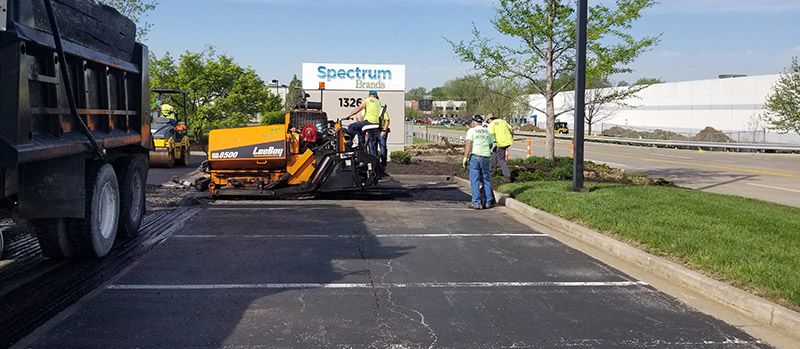A1 Professional Asphalt & Sealing Llc Things To Know Before You Buy
Table of ContentsNot known Details About A1 Professional Asphalt & Sealing Llc A1 Professional Asphalt & Sealing Llc - An OverviewThe smart Trick of A1 Professional Asphalt & Sealing Llc That Nobody is Talking AboutTop Guidelines Of A1 Professional Asphalt & Sealing Llc7 Simple Techniques For A1 Professional Asphalt & Sealing Llc

The oil in an auto engine is not simply oil. It includes a variety of ingredients to enhance the vehicle's efficiency. These consist of polymers, thickness modifiers, heat stabilizers, added lubricants, and wear ingredients. The REOB includes all the ingredients that remained in the waste oil along with the wear steels from the engine (mainly iron and copper).
Nonetheless, by making many blends utilizing various REOB examples and various asphalt binders, the variations mainly can be averaged out. A number of States offered samples of known REOB make-up to TFHRC researchers, that examined the samples to contrast the portion of included (understood) REOB to the found (examined) amount. The evaluations showed a similar percent of included and discovered REOB.
The Only Guide for A1 Professional Asphalt & Sealing Llc
They obtained an overwhelming action. The TFHRC researchers assessed 1,532 samples from 40 States, one Canadian province, and 2 Federal Lands Freeway divisions. They evaluated each sample twiceamounting to more than 3,000 analyses. None of those States recognized that the asphalt they were purchasing consisted of REOB. One State insisted its samples had no REOB.
Of the 1,532 examples checked, 12 percent had REOB, and some included substantially high degrees of it at 1020 percent. The highest degree was 34 percent in an example from Texas, which TxDOT had used in a patching substance. This testing also exposed the presence of phosphoric acid in 11 percent of the examples, and 2 percent contained ground tire rubber.
2 years earlier at TRB's annual conference, the Federal researchers held an REOB workshop and offered the searchings for of their lab evaluations to a standing room-only crowd. Although some firms do not especially prohibit REOB, they do impose physical tests that prevent its useeffectively a restriction. a1 professional. Others do not ban it by requirements, however have arrangements with asphalt suppliers to prevent the usage of REOB
Examine This Report on A1 Professional Asphalt & Sealing Llc
A handful do allow REOB, some within specific limits. For instance, Ohio and Texas limitation levels to less than 5 percent of the asphalt. To create a dependable test approach that all States can utilize, the TFHRC researchers set up this website a round-robin examination plan. The participants are 11 State freeway firms (Illinois, Massachusetts, Minnesota, Mississippi, Montana, North Carolina, Oklahoma, South Carolina, Texas, Vermont, and Wyoming), 2 independent testing labs, the Ministry of Transportation in Ontario, Queen's College in Ontario, and an Ontario paving professional.
In overall, the scientists prepared and delivered 720 blends. The participants are evaluating the examples separately using the standards offered by the TFHRC researchers. The round-robin screening is nearly finished, and TFHRC remains in the procedure of gathering the results. The output will certainly be a recommended AASHTO test approach that any type of State can take on and use (a-1 asphalt).
The pavement with REOB, which is situated 0.6 mile (1 kilometer) from the sidewalk without REOB, has similar subgrade, web traffic thickness, and climate. The segment of Highway655 with 5 to 10 percent REOB showed significant breaking. In this example, the existence of REOB was the determined reason of splitting at a reduced temperatures.
A section of examination pavement in Minnesota (MN1-4) discovered to include REOB likewise split too soon. The sidewalk done well for the very first 3 to 4 years, however after that began to crack.
A1 Professional Asphalt & Sealing Llc Fundamentals Explained
The examinations were not comprehensive, however they revealed that at levels of 6 percent or even more, the tensile stamina of the asphalt dropped significantly. At a degree of 3.5 percent REOB, the variant in the physical test approaches was better than the result of REOB. In truth, it was tough for scientists to analyze whether REOB existed.

One binder specification thought about is the difference in between the low temperature crucial spec temperature for rigidity (S) in the bending light beam rheometer and the flexing beam rheometer creep incline (m-value) noted as Tcritical. Two independent research study teams, one from AASHTO and the other from the Asphalt Institute, wrapped up that more study is required on the usage of REOB in asphalt.
Previously, all asphalt testing determined design homes such as rigidity. These tests do disappoint what materials had actually been included in the asphalt. One sample received throughout the TFHRC research study had a really unusual analysis. The sample had the adhering to examination results: Superpave PG 64-28 with a heat grade of 67.3 Tcritical on the flexing beam of light rheometer was 6.7 degrees Celsius.

A1 Professional Asphalt & Sealing Llc Can Be Fun For Everyone
These outcomes show there are weaknesses in the standardized engineering screening protocols that may be exploited. The producer might have a financial advantage and the product passes all the standard examinations, yet the product may not be advantageous to making certain long-term efficiency. To address this problem and the growth of brand-new asphalt additives and extenders, TFHRC is beginning a research study program to utilize portable spectroscopic tools, x-ray fluorescence spectroscopy, and Fourier transform infrared spectroscopy to allow analyses to be done in the field as opposed to needing to take samples back to the laboratory.